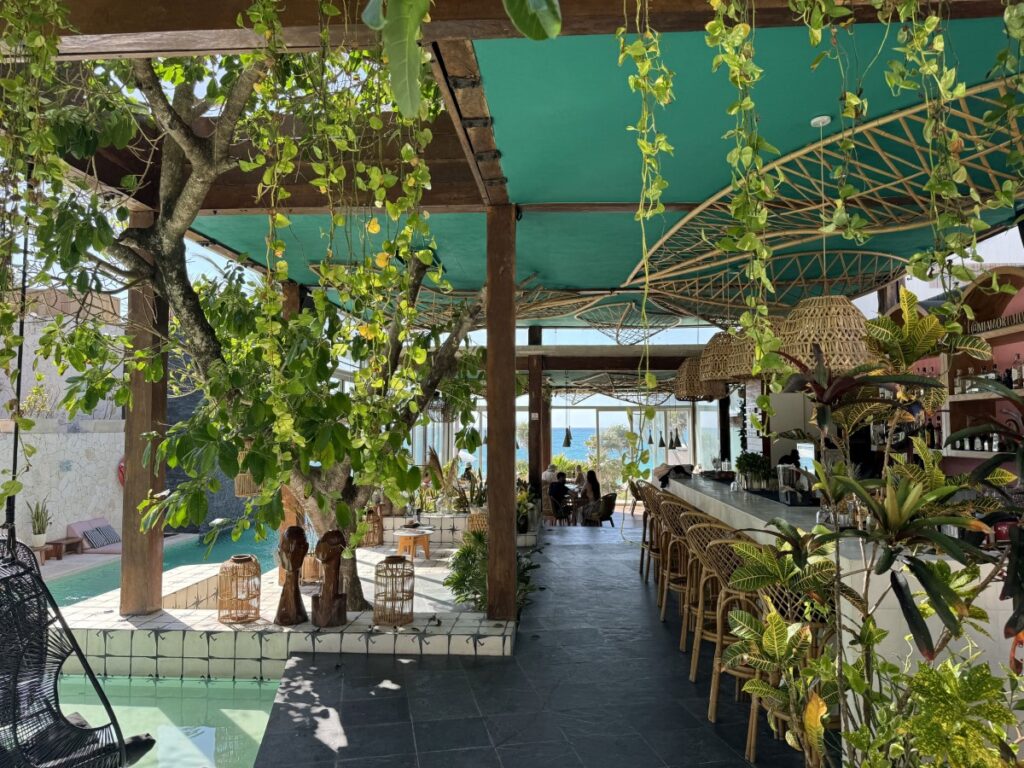One of the best ways to learn about a culture is through food.
The Yucatan Peninsula, situated along the Caribbean in southeastern Mexico, is a fascinating place to discover new flavours, distinct ingredients and traditional preparation methods. You might find yourself exclaiming often, “I have never tasted anything like this before!”
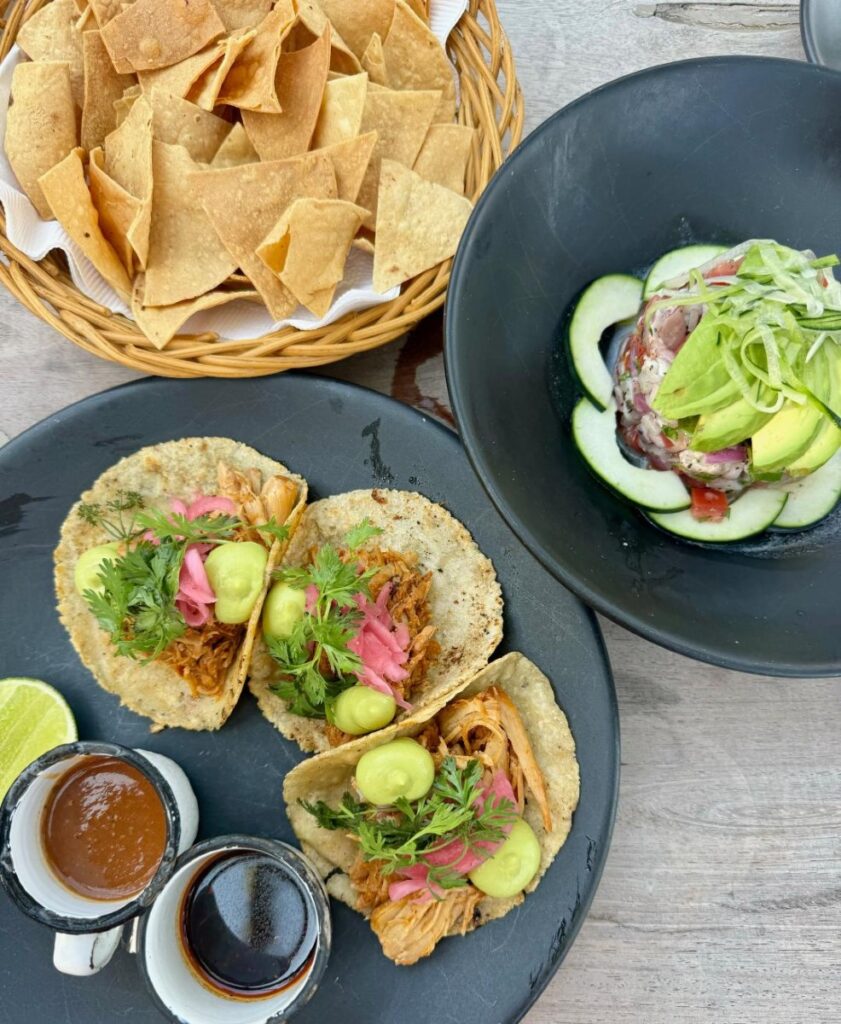
While Merida and Valladolid are the cultural capitals of traditional foods in the Yucatan Peninsula, it’s easy to find Mayan and Yucatecan influences all along Riviera Maya, the coastal Caribbean area that borders the Gulf of Mexico in the north and the dense jungles of Belize in the south. The Yucatan state is considered the heart of Mayan culture, where today its roots are still found in local dishes, featuring ingredients from this mostly tropical climate that have adapted to the area over thousands of years. After Spanish colonization in the 1500s, France and even the Middle East introduced new ingredients, but the basics remain the same.

The ancient Mayan diet consisted mainly of maize (corn), squash and beans along with chile peppers and tomatoes. Among these, corn was the most important, as masa (corn dough) made tamales, tortillas and more. Turkey and wild game were the most commonly used proteins until the Spanish eventually brought other meats like pork. Staples today in Yucatecan cooking include naranja agria (a tangerine-like bumpy sour orange) and achiote (crushed or powdered seeds from the Bixa Orellana shrub, also called annatto). Food is a reflection of the Mayan way of life.
Old-style and modern Yucatecan dining opportunities abound – from pedestrian street carts to mega resorts along the Riviera Maya – showcasing a variety of local flavour experiences. But the best mix of original tradition and elevated interpretation is in Tulum, two hours south of Cancun. Locals still meander the jungle roads selling crickets in big buckets, freshly skewered mango in the shape of flowers, and tamales from carts where masa is stuffed with chicken and cooked in banana leaves, often topped with spicy habanero salsa. Once a laid-back fishing village filled with wandering backpackers, Tulum now attracts sophisticated travellers looking to escape to the Caribbean coastline’s eco-chic, intimate Bohemian style and creamy white sand beaches.

Due to the town’s sexy laid-back personality, warm welcoming winds, and crystal-clear turquoise waters, the jungle beach strip has grown dramatically in the last decade — now with direct flights arriving into the new local International airport from the US and Europe. A new nature reserve (Jaguar National Park) near Tulum Ruins is underway to protect and preserve local wildlife and the environment and a new Mayan train is set to expand across Mexico with 34 stops connecting dozens of must-see landscapes across the Yucatan Peninsula.
How will this affect the spread of cultural ideas and local cuisines? Only time will tell.
Get to know Riviera Maya by trying different bites from roadside carts, open air taquerias, and chic jungle or beachfront restaurants that put an elevated spin on traditional dishes.
Five Dishes to Discover
Sopa de Lima
Where to try it: Chaká Restaurant at Grand Velas Riviera Maya
Lime Soup is one of the most popular Yucatecan dishes. Chaká Restaurant at Grand Velas Riviera Maya serves the soup extra creamy, almost orange in colour, made with roasted turkey (or chicken) marinated with onion, roasted tomatoes, spices and sour limes. The soup is delightfully dressed with crispy tortilla chips and corn flakes. Lime may not the main ingredient, but it’s the star of the show.
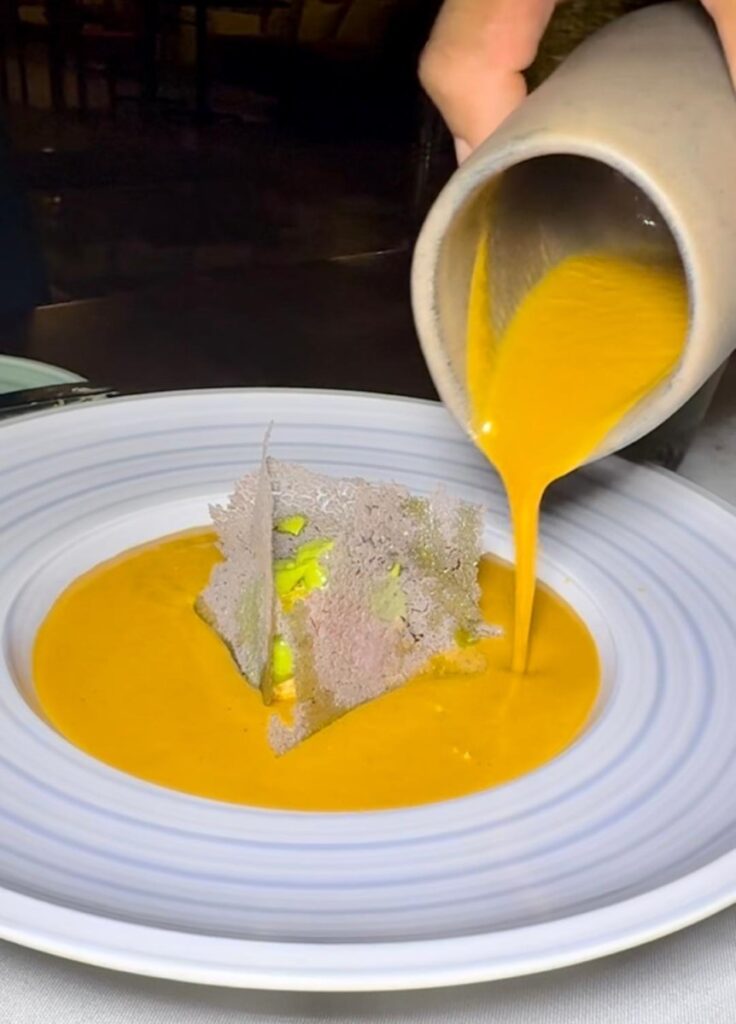
Bonus Tips: Surrounded by lush jungles, Chaká restaurant celebrates traditional Mayan cuisine with dishes like Tongue in Mole of Ashes with pumpkin puree (with a similar taste and texture as beef cheek), Hairy Pig (confit pork belly), Rib Eye in black ‘recado’ crust, Sikil Pak salad, and stuffed cheese.
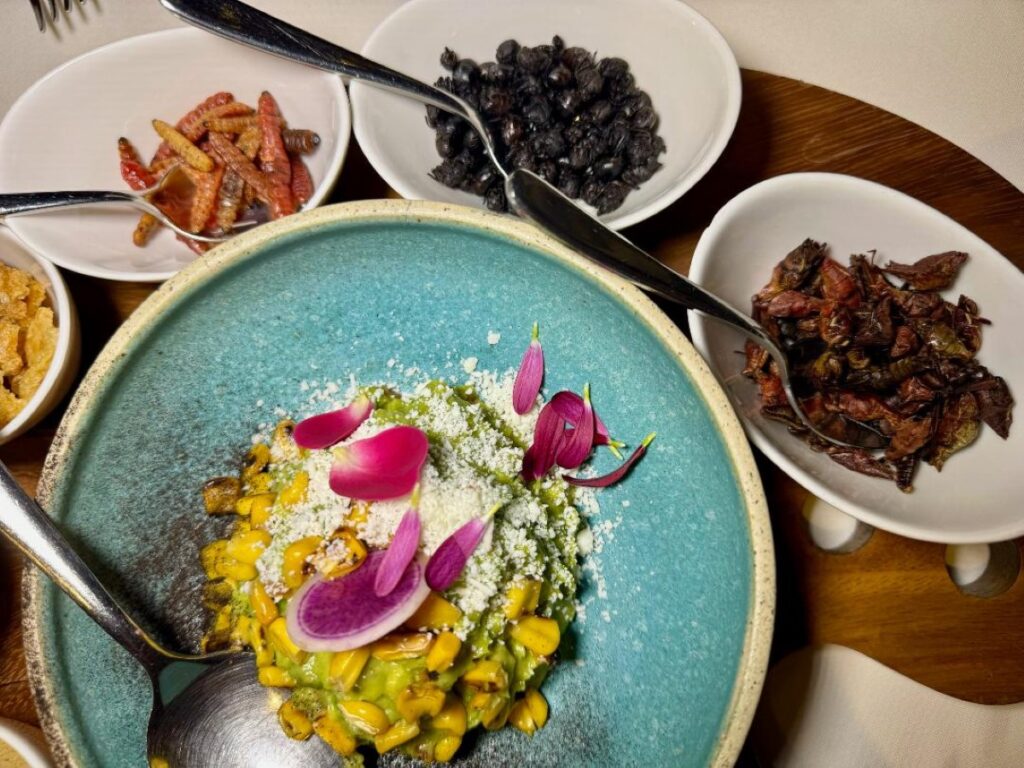
The all-inclusive Grand Velas Riviera Maya showcases traditional culinary experiences – offering guacamole with crispy black ants, worms and grasshoppers; Mezcal tastings paired with mole or chocolate; and a honey experience in the gardens sampling several nectars (coffee honey from Chiapas, dzidzilche, and butter honey) – with cheeses and breads – while learning about meliponicultura, the farming of the stingless Mayan bee, and the various medicinal properties and benefits of its honey.
Where to try it: XELA Tulum
A hot Caribbean day pairs well with fresh raw fish and shrimp marinated in lime juice and tossed with diced tomato, red onion, olive oil and cilantro. Layered with avocado on top, this perfect light and refreshing beachside snack is meant to be scooped up with tortilla chips.
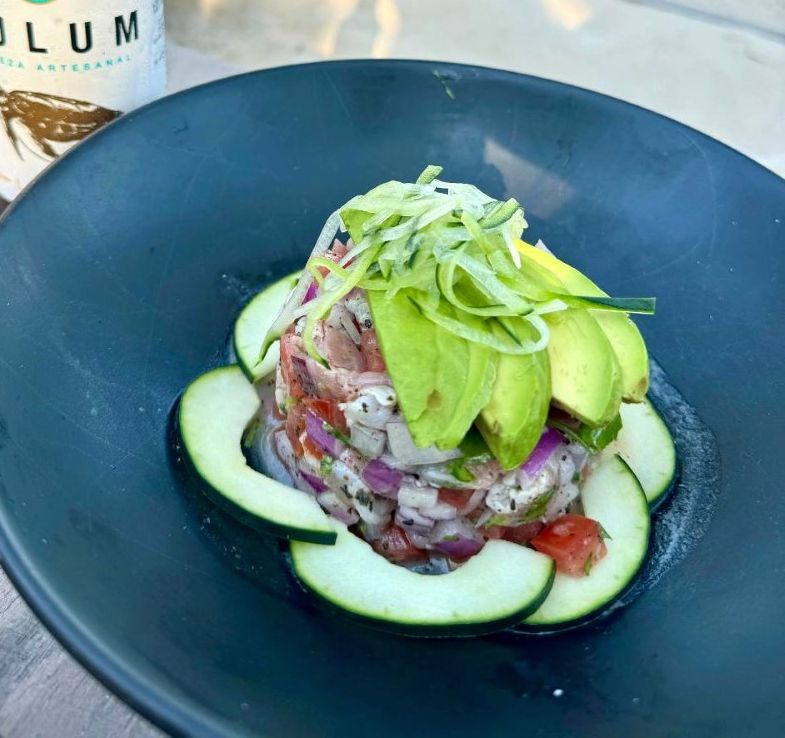
Bonus Tips: The food at this little 12-room B&B doesn’t disappoint. Best bites include XELA’s (“shell-ah”) grilled Shrimp Tacos and Cochinita Tacos as well as Chilaquiles and Rancheros Eggs for breakfast taken in-room, poolside, or on the beach.
Cochinita Pibil
Where to try it: Taqueria Honorio Tulum
One of the most famous Yucatecan dishes, cochinita pibil, is slow roasted pork that is marinated in sour oranges and achiote (annatto seed) which gives it a rich orange colour. Traditionally, cochinita is wrapped in banana leaves and cooked underground in a hole called a pib – hence the “pibil” in the name. You can find some smaller Mayan villages still cooking it this way.
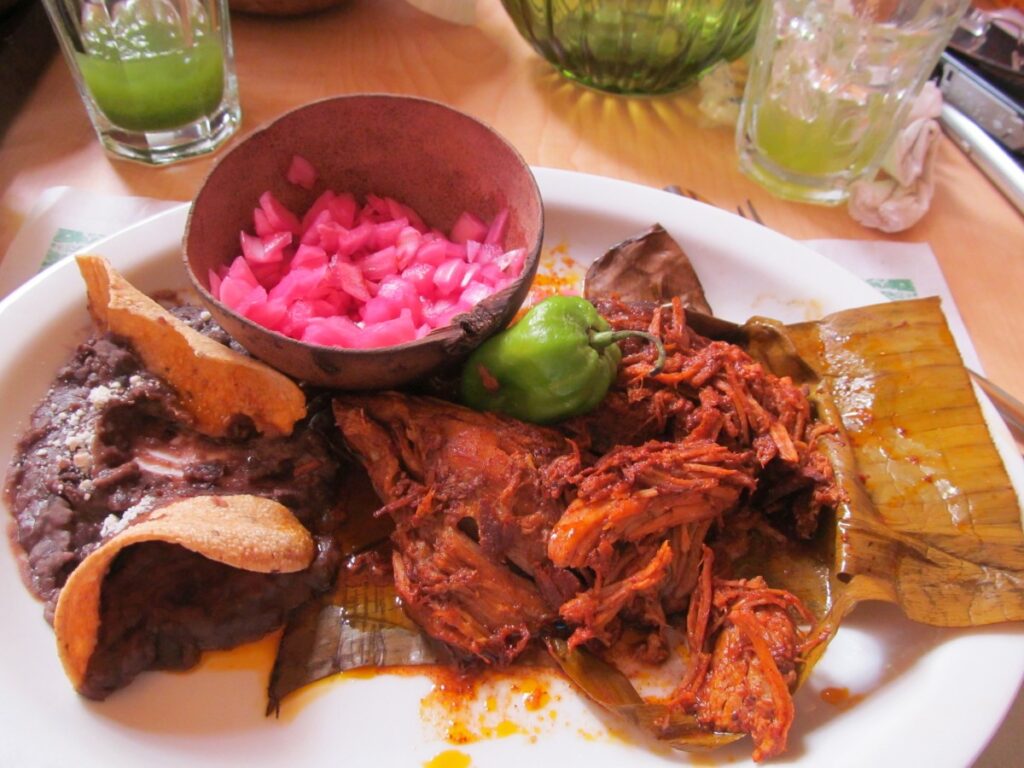
Often, the best can be found at no-frills local spots like Taqueria Honorio, on a side street in the north side of Tulum town, where the most succulent cochinita pibil is served inside tacos and tortas (sandwiches on homemade bolillo bread like a soft hoagie roll). It’s not too spicy and is accompanied by salsas, limes and pickled red onions.
Bonus Tips: Other taco and torta favourites at Honorio are stuffed with suckling pig, carne asada, and marinated turkey. The most popular combos sell out by noon. Locals recommend the Black Turkey Taco or Torta with Relleno Negro (turkey meat marinated in grilled peppers and spices). Affordable and delicious, Honorio has become a super-popular staple in the community.
Marquesitas
Where to try it: Arca Tulum
No savoury dinner is complete though without a final sweet treat. Marquesitas – a unique Yucatecan treat often sold by street vendors at night – is a waffle-like cone cooked on a hot grill and then rolled and filled with edam cheese or cajeta (Mexican caramel), jam, condensed milk, and choices of chocolate or strawberry sauce. The base was created in 1945 by ice cream maker Don Vicente Mena Munoz in an attempt to entice customers and generate more sales during the winter.
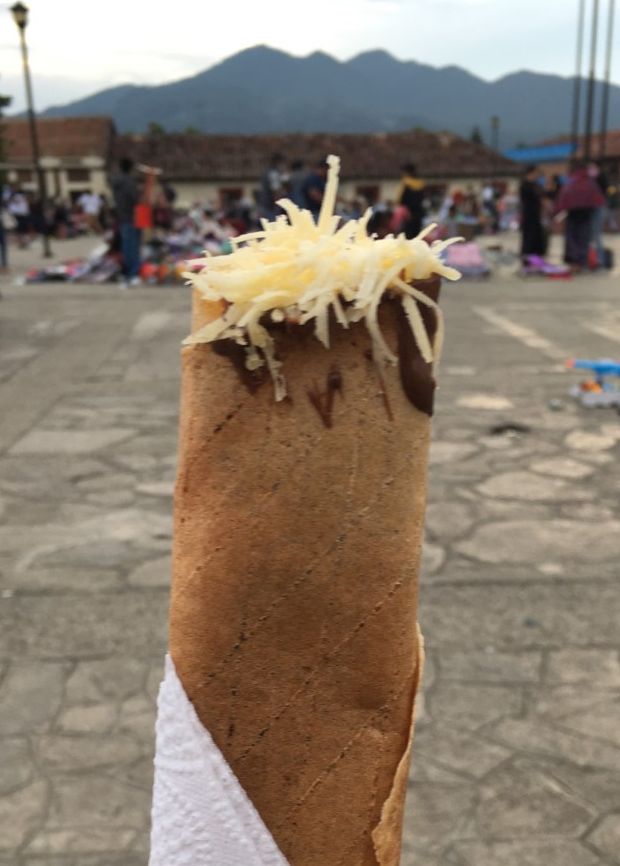
Find this treat in Tulum pueblo at La Plaza Municipal or a fancier elevated version at Arca, made with plum fermented hibiscus reduction, goat cheese ice cream, and dulce de leche.
Bonus Tips: Pig is big in the Yucatan. The varieties of pork presentation are abundantly represented across Riviera Maya, and some of the best originates from Merida, the vibrant capital of the state. Famed Tulum jungle restaurant Arca uses hyperlocal ingredients to elevate some of the best suckling pig from Merida. Arca’s menu is an experience, inspired by street food dishes and embrace of local traditions, fireside cooking, and explosive flavours. The winner of Latin America’s 50 Best Restaurants in 2023 and The World’s 50 Best Bars in 2023, chef-owner Jose Luis Hinostroza is a SoCal native and the culinary genius behind several eateries in Tulum, after hanging his hat at some of the top Michelin restaurants in the world including Noma in Copenhagen.
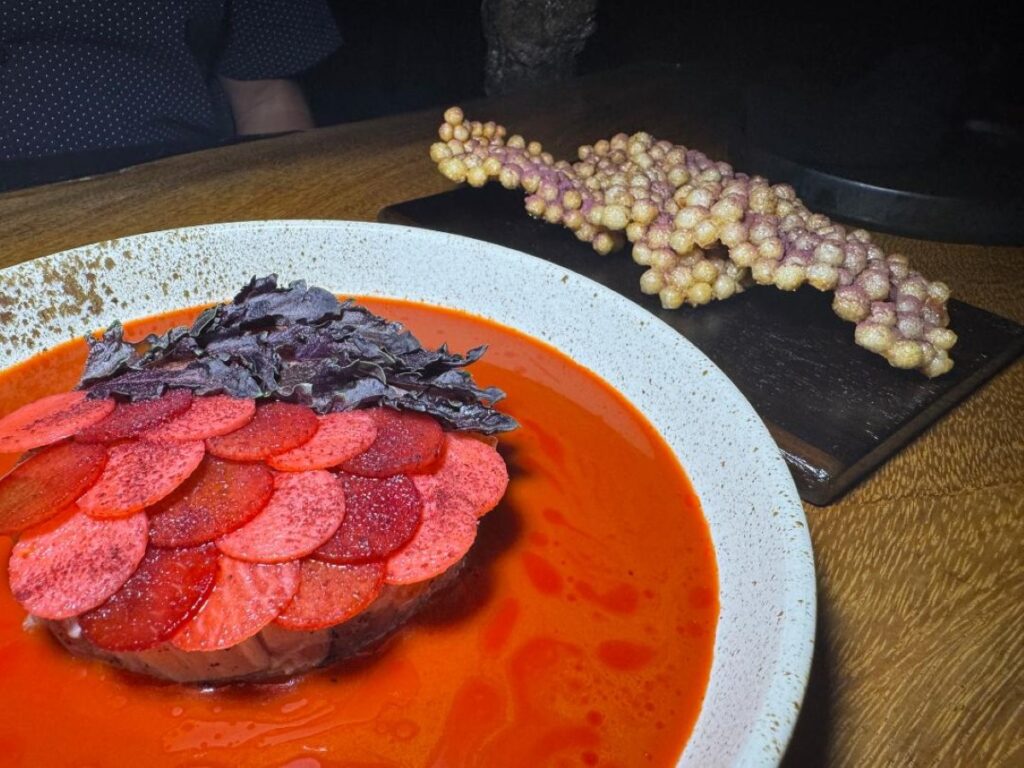
While the menu changes to reflect local specialties, must-try staples include Bluefin Tuna Crudo served in hibiscus and fermented plum aquachile, Suckling Pig from Merida where the smoked carnitas and crispy belly are fermented with cacao pulp and cinnamon leaf oil and served with fresh puffed corn tortillas, and Softshell Crab Tacos fried in amaranth and mezcal tempura served on a leaf with jungle gooseberry.
Even cocktails are a next level local flavour extravaganza – with specialty Mezcal concoctions, a tepache blend, and flavour medleys such as Melipona, a clarified punch of Woodford Reserve, sour orange, ginger, Xtabentun D’Arisi, and smoked honey topped with a honeycomb wax wafer.
Where to try it: Mi Amor Tulum
This creamy dip, pronounced si-kal-pak, is made by blending ground pumpkin seeds with roasted tomatoes and spices, creating an earthy rich flavour that is quite addictive. The smoky flavour apparently comes from the pumpkin seeds roasting close to the charcoal. Chef Jose Luis Hinostroza is responsible for the menu at Mi Amor, where he is truly passionate about sharing the essential flavours of the Yucatan and Riviera Maya while preserving roots and traditions. Dzikilpak is a masterpiece of Yucatecan cuisine and consumed in households with pride. Try making Chef Jose Luis’s recipe below or order it at Mi Amor where we were instructed to mix the dip with the surrounding guajillo oil and break apart the flaxseed tostada to use as a little shovel.
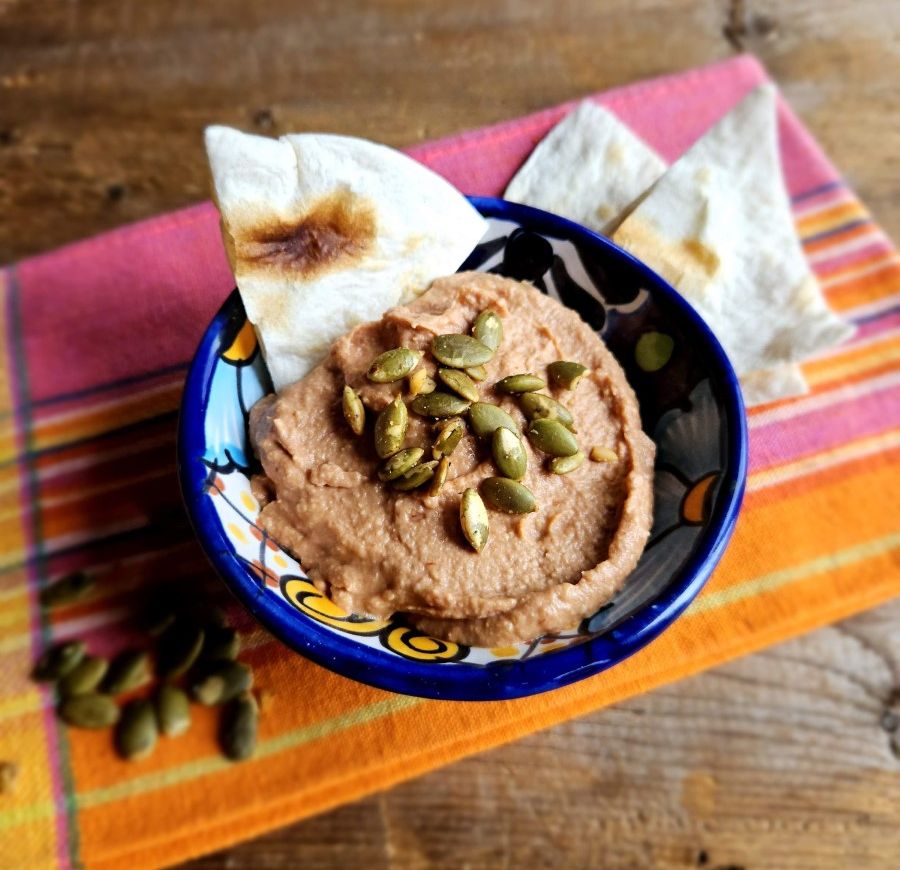
Bonus Tips: Don’t miss the new brunch menu item Ceviche Negro, consisting of raw white snapper cubes cured in citrus juices with daikon radish cubes enshrined with black sauce (due to the charred ingredients) and topped with cilantro and thin slices of avocado from Michoacan, which is black on the outside and yellow within. Scoop with tostadas.
Other must-try locally inspired items include the colourful Hamachi Crudo with fish straight from the sea, Steak Chilaquiles Bowl for breakfast, and Relleno Negro. Similar to Cochinita, the stew-like dish made with wild turkey or pig is slowly roasted in broth and a unique blend of garlic, spices, and roasted chiles which give it a striking black colour – de arbol (tree chile) ashes for kick or chile ancho in milder versions.
